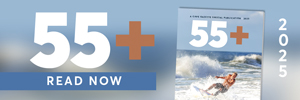Inland Bays experts to discuss water contamination April 23
The Delaware Center for the Inland Bays invites the public to a virtual Scientific and Technical Advisory Committee meeting from 9 a.m. to 12 p.m., Friday, April 23. Attendees will learn about the impacts of legacy and emerging contaminants, wastewater planning and continuous water-quality monitoring in the Inland Bays.
STAC meetings are fantastic opportunities for residents to learn about local environmental issues and ask questions about the latest research in the Inland Bays. This committee provides objective, science-driven advice and guidance to the center’s board of directors and other cooperating agencies with interests in the Inland Bays.
Dr. Miling Li, an assistant professor at the University of Delaware’s School of Marine Science and Policy, will talk about her current Delaware-based research on per- and polyfluoroalkyl substances, also known as “forever chemicals'' because they do not break down in the environment. These man-made chemicals have been used in a wide range of industries for decades, and there is now evidence that exposure to PFAS can lead to adverse human health effects, according to the U.S. Environmental Protection Agency. Li, who studies global and local environmental issues related to ecosystems and public health, will also discuss her work related to heavy metals found lingering in various ecosystems.
Michelle Schmidt, CIB watershed coordinator, and Dr. Marianne Walch, CIB science and restoration coordinator, will moderate a discussion on how to track the amount of nutrient pollution that enters the bays from treated wastewater applied to the land. Treated wastewater from public and private treatment facilities is frequently applied through spray irrigation to agricultural fields, or is put directly into the soil through rapid infiltration basins. While additional pollutant removal occurs in the ground, some pollutants still remain in the water that will eventually make its way to nearby waterways such as creeks and bays. The ultimate goal is to create a “nutrient budget” for wastewater discharges in the Inland Bays watershed that will help decision makers protect the health of the bays.
“We no longer have any direct discharges of wastewater (point sources) into the Inland Bays, which is great news,” said Walch. “But we do have increasing amounts of wastewater applied to the land because of the growing populations of people and chickens in our area. We need to understand how much of the nutrients in this wastewater are reaching the Inland Bays so that these discharges can be managed properly now and in the future.”
Andrew McGowan, an environmental scientist at the center, also will join Walch to discuss a new continuous water-quality monitoring network being installed in the Inland Bays. Dissolved oxygen data collected last year from the upper Indian River will be presented. This network, which has started with a handful of monitoring stations that collect water-quality data every 30 minutes, is a high-priority action in the Inland Bays Environmental Monitoring Plan. Additional stations are planned for 2021, and the STAC will be asked for input on future expansion plans and funding.
The public and members of the media are encouraged to attend the Zoom meeting at udel.zoom.us/j/92329988767 and enter the passcode “science.” To join by phone, dial 646-876-9923 and enter meeting ID 966 0476 1476.
For more information, go to inlandbays.org.





















































